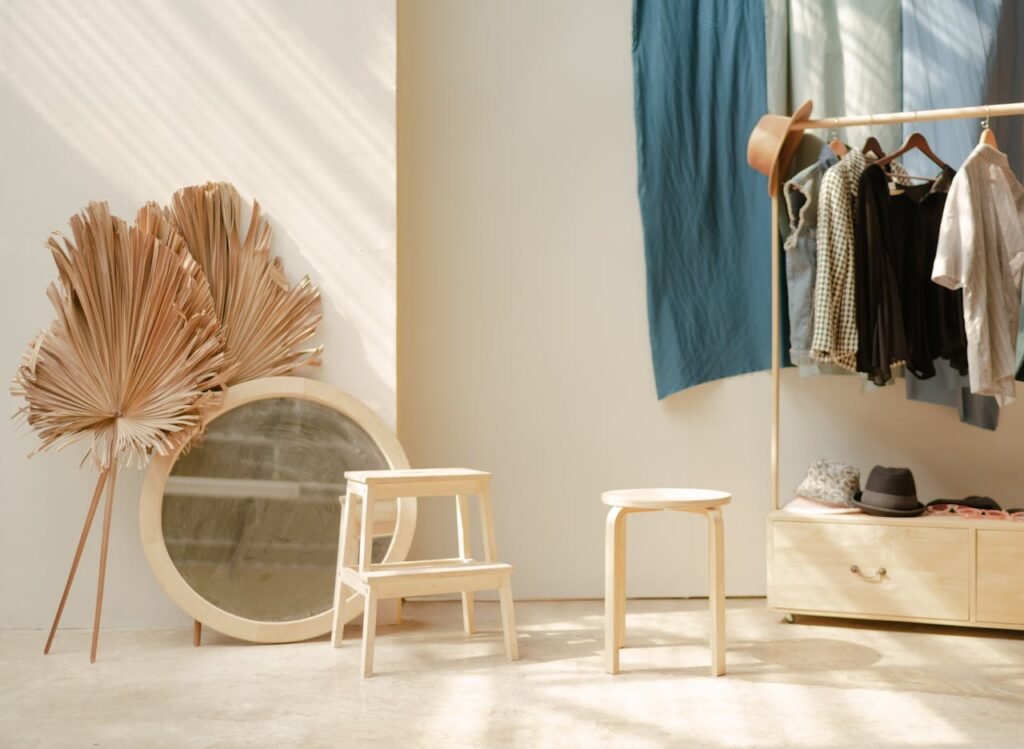Key Takeaways:
- Learn savvy tactics for securing fashionable pieces without overspending.
- Understand the role of psychology and careful planning in intelligent shopping.
- Explore sustainable practices that benefit both your wallet and the environment.
Building a Budget-Friendly Wardrobe
Building a budget-friendly wardrobe means you can maintain quality and style. It’s about finding a balance between affordability and fashion. Start by evaluating your existing clothing pieces, understanding what works, and identifying versatile items that complement your style. Setting a clear budget for new purchases encourages a more focused approach to shopping, reducing the temptation to buy unnecessary or trendy items that quickly fall out of fashion. By investing in iInvestingieces that can work for multiple occasions and seasons, you’re not to save money, and curates are refined and adaptable to changing trends.
Utilizing Coupons and Discounts Wisely
To economize effectively, utilizing various avenues for savings, such as coupons, can significantly lower expenses. Online hubs like Express boast an array of promotional deals and discounts, making it possible to indulge in the latest fashion trends without overspending. It’s not solely about chasing the cheapest prices; it’s about intelligent timing and planning your purchases to correspond with the best sales and promotional events. For example, signing up for email alerts from your favorite retailers can keep you abreast of upcoming sales and exclusive offers, helping you buy strategic pieces at a fraction of the cost.
The Benefits of Seasonal Shopping
Shopping seasonally is an excellent strategy for the budget-conscious fashionista. Retailers often discount seasonal items heavily to make room for new stock, providing an opportunity to purchase high-quality apparel at reduced prices. The trick is timing—purchasing a heavy winter coat during the spring or summer can offer significant savings. Planning your wardrobe a season in advance prepares you for future needs. It helps you resist the temptation of full-priced, in-season purchases, thereby maintaining a stylish wardrobe without exceeding your budget.
Mixing High-End with Low-Cost Fashion Pieces
The art of mixing high-end items with more affordable pieces allows you to flaunt a fashionable, high-quality look while sticking to a budget. Investing in a few luxury items for their superior craftsmanship and longevity and pairing them with budget-friendly basics maximizes the impact of your wardrobe without a hefty price tag. This blend ensures your style remains fresh and contemporary without constantly purchasing new high-end pieces. The key to this approach is identifying which items to splurge on—such as a classic leather bag or a well-tailored blazer—and finding budget-friendly alternatives for trendier, more transient items.
Thrifting and Second-Hand Shopping: A Sustainable Choice
Thrifting and shopping for second-hand clothes have become popular among those looking to save money and make environmentally responsible choices. Thrifting allows fashion enthusiasts to discover unique, vintage finds and affordable designer pieces that add character and diversity to your wardrobe without the retail markup. These shopping methods support sustainability by reusing clothing, decreasing demand for new production, and reducing the overall environmental footprint. With the added thrill of the hunt, thrifting can be a fun and rewarding way to enhance your style on a shoestring budget.
Capsule Wardrobes: Maximizing Style and Minimizing Spending
The concept of a capsule wardrobe has gained traction for its minimalist and intentional approach to fashion. By focusing on a compact collection of versatile and interchangeable garments, individuals can create various looks with a limited number of pieces. This strategy reduces the need for excessive spending on clothing and encourages creativity in styling. It also eliminates the paradox of feeling like you have nothing to wear despite a full closet, ultimately facilitating a more organized, clutter-free, and economically friendly approach to dressing.
Online Shopping: Finding the Best Deals
With the rise of e-commerce, the shopping landscape has expanded to include various online retailers competing for your attention—and your wallet. This competition often results in better deals for the consumer, as online stores frequently offer web-exclusive discounts. Savvy shoppers can capitalize on these deals without ever setting foot in a brick-and-mortar store by using price comparison tools, cash-back offers, and online coupon codes. Signing up for newsletters, configuring price-drop notifications, and patiently waiting for the best deals to emerge are all effective tactics to secure stylish pieces at reduced costs.
Caring for Your Clothes to Make Them Last Longer
The longevity of your clothing can be significantly extended through proper care and maintenance, which is both economically and environmentally sound. Learning about the specific care requirements of different fabrics, applying correct laundering techniques, and managing minor repairs like sewing a button or fixing a seam can save you the cost of frequent replacements and preserve the integrity of your clothes. Additionally, investing in quality hangers and proper storage solutions can prevent damage and extend the wearability of your garments, ensuring that your budget-friendly wardrobe remains in excellent condition for years to come.
The Psychology Behind Smart Shopping
Smart shopping is more than scouring for discounts; it’s a disciplined approach influenced by an understanding of the psychological aspects of consumer behavior. Often, we are swayed by impulse purchases that seem to offer immediate gratification, only to regret them later when they strain our budgets. By being mindful of these psychological triggers—such as the allure of a sale sign or the excitement of a new trend—we can make decisions that better align with our financial constraints and lifestyle preferences. Developing a keen awareness of our emotional responses to shopping can lead to more thoughtful, economical, and stylish purchases.
Conclusion: Balancing Cost and Fashion
Ultimately, maintaining a balance between fashion-forward choices and manageable expenses is achieved through informed shopping and thoughtful wardrobe management. Using strategic savings opportunities, such as coupons and seasonal discounts, can significantly lower your fashion expenses. Furthermore, incorporating practices such as thrifting and responsible garment care contributes to a sustainable lifestyle while providing financial flexibility. Implementing these strategies allows individuals to express their style without succumbing to the pressures of consumerism, thereby fostering a savvy, stylish, and sustainable approach to dressing.

